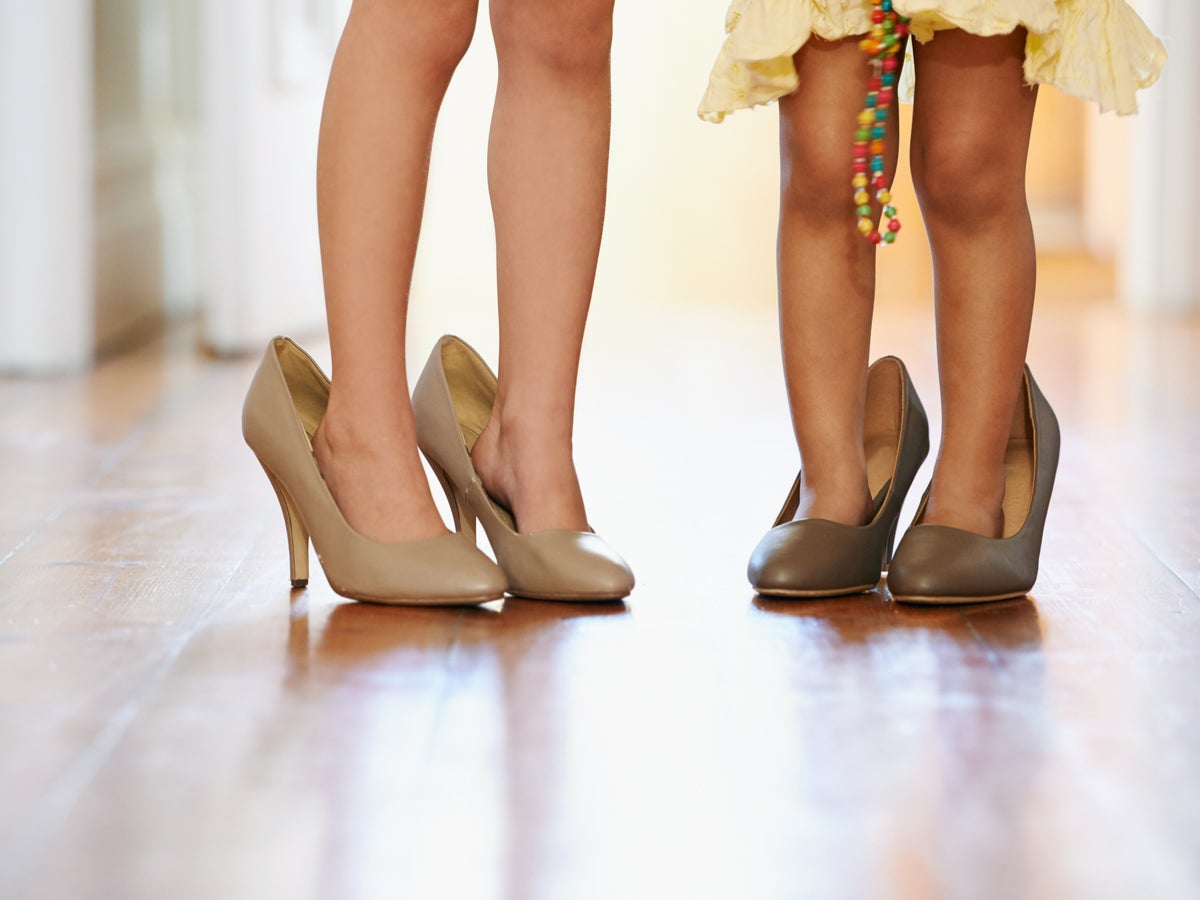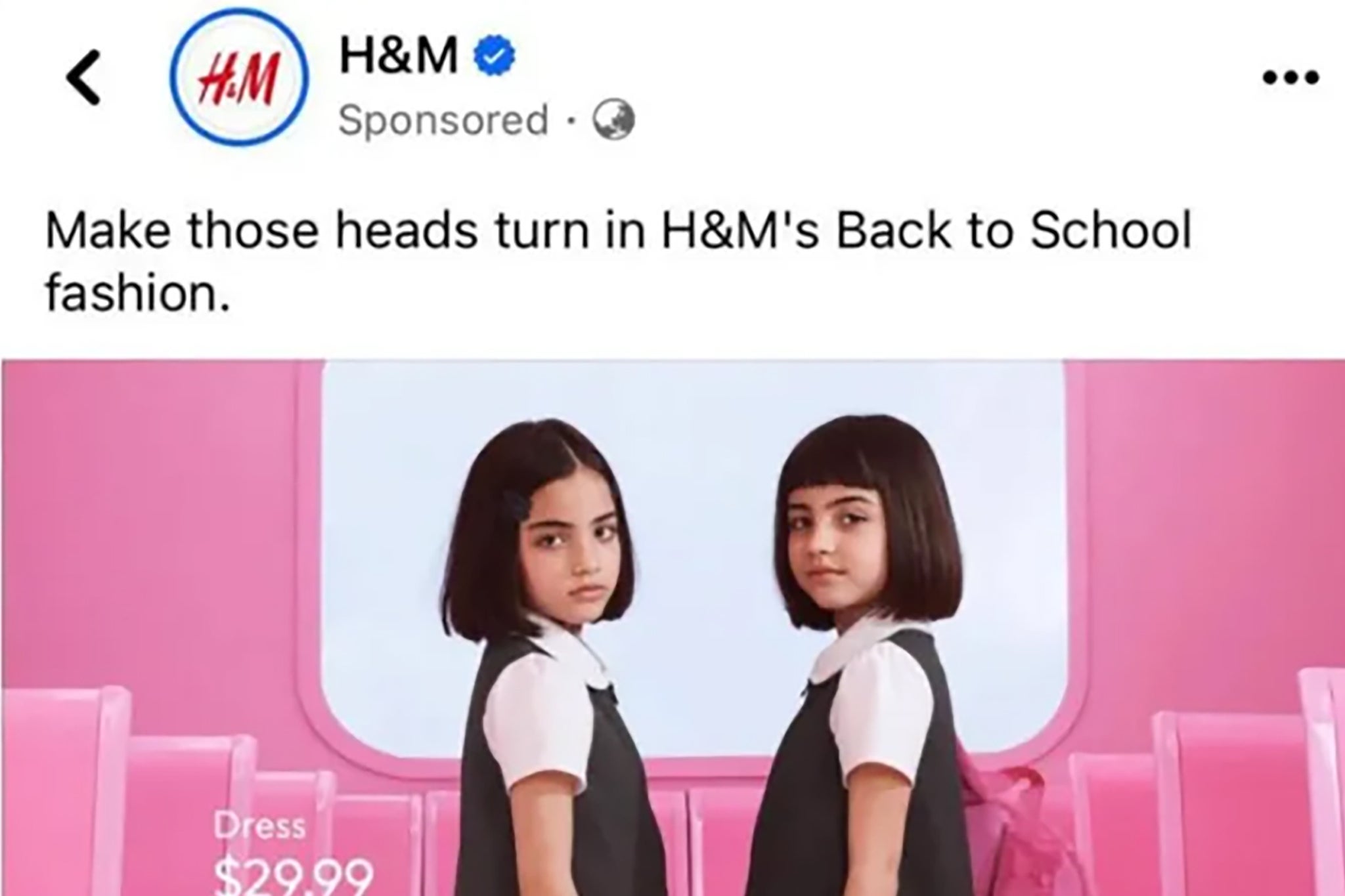
Support truly
independent journalism
Our mission is to deliver unbiased, fact-based reporting that holds power to account and exposes the truth.
Whether $5 or $50, every contribution counts.
Support us to deliver journalism without an agenda.

Louise Thomas
Editor
Now, I’m no fashion designer. But I’ve got questions for the person who pitched a T-shirt for girls – children, not women – emblazoned with the words “The perfect snack” on the front, and “Take a bite” on the back, alongside two halves of a cut strawberry. I also have questions for the presumably more senior person who heard the idea and said: “Sure, sounds great – get it into production ASAP!”
For someone at high-street chain Zara must have signed off on the whole thing, leading to the brand’s most recent embarrassing PR disaster. One concerned mother posted about the T-shirt on TikTok, saying: “I am not one to be overly sensitive about clothing, and this was in the girls’ section. Just wait till you see what’s on the back. If you have bought this for your child, you need serious words with yourself, in my opinion. I’m so shocked. ‘Take a bite’ – is it just me? Or is this just not OK?”
Laura Wilson described the top, designed for six- to seven-year-olds, as “very suggestive, vile and grim and not appropriate for a child”, adding that she would “never have my daughter walking around with ‘take a bite’ on the back of her T-shirt”.
Unfortunately for Zara, Wilson, who goes by the TikTok handle “chaos.to.sanity”, has more clout than most on the social platform thanks to a 57,000-strong following. Her post quickly garnered more than 41,000 views, and had nearly 500 comments at the time of writing, many of which expressed a similarly disgusted sentiment. After it was pointed out that the term “snack”, in colloquial parlance, can be used to describe a person who is sexually attractive, Zara was left with no choice but to pull the item from stores and issue an apology.
“There was no intention for the use of the word ‘snack’ on this T-shirt to imply anything other than the traditional meaning of the word, as evidenced by the image of a strawberry on the garment,” said a spokesperson for the brand. “However, we now understand that some individuals have interpreted the term differently. Therefore, we have removed the T-shirt from stores and our website and we apologise for any misunderstanding or offence caused.”
It’s just the latest in a long line of kids’ clothing that has been weirdly suggestive or hyper-sexualised over the past 15 years. By 2011, things had become so progressively creepy that some of the biggest retailers, including Marks & Spencer, Next, Debenhams, George at Asda and Tesco, agreed to adhere to guidelines that barred them from stocking clothes sexualising children under 12. This included thongs, black underwear and padded bras; items for primary schoolers emblazoned with the Playboy bunny logo; and a “Lolita” bed aimed at six-year-olds (presumably referencing the Vladimir Nabokov novel in which the protagonist is a paedophile who preys on the young daughter of his adult partner).

The late Noughties and early 2010s were a weird time by all accounts. BHS put out a range of “sexy” underwear aimed at the under-10s (which was, thankfully, quickly withdrawn); Primark, named as the worst offender by a Channel 4 investigation, was lambasted for its own selection of padded bikinis and bras for girls as young as seven; New Look was selling 3.5in high heels for eight-year-olds. Actual slogans on girls’ tops included: “So Many Boys, So Little Time”; “0 to Naughty in 6 Seconds”; “Don’t Touch What You Can’t Afford”; and “You Wish”.
A Mumsnet campaign ensued and there was a crackdown across the board in the UK, with the then PM David Cameron going so far as to call some of the children’s items found on the high street “harmful and creepy”. The worst excesses were curbed; times had changed. Or so we thought.
Even before Zara’s latest snafu, other stories had been slithering back into the press. In 2023, online retailer Temu had an advert banned by the UK’s advertising watchdog for showing a girl aged between eight and 11 wearing a bikini in a pose that “was quite adult for a girl of her age”. In Australia, H&M was forced to remove a campaign for school uniforms earlier this year because it “sexualised” young girls, carrying the tagline: “Make those heads turn in H&M’s Back to School fashion.” In February, Sun journalist Lynsey Hope named and shamed Chinese fast-fashion mega-retailer Shein for flogging padded bikini tops and “revealing” party dresses and skirts “that barely cover their bottoms” to girls as young as eight.
“Even more disturbing is the fact these skimpy outfits are modelled provocatively, in poses you might expect from a glamour model,” she wrote in an impassioned article attacking the brand. “There’s a girl who looks about six pouting and popping her leg, another twiddling her hair, and tweens with hands on hips, cocking their heads.”
The issue of sexualisation can be subjective – but could you imagine boys being offered clothing like this?— Let Clothes Be Clothes
Then there was Matalan’s “Candy Couture” range for 9- to 16-year-old girls, which came under fire in 2022 due to its off-the-shoulder Bardot dresses, crop tops, boob tubes and hot pants.
“It’s not prudish to say these are not children’s clothes; they are short, tight and skimpy because they reflect adult, sexual designs. Very irresponsible,” said campaign group Let Clothes Be Clothes at the time. “We are for choice, and the issue of sexualisation can be subjective – but could you imagine boys being offered clothing like this?”
A spokesperson for Matalan responded: “We are extremely conscious and proud of our longstanding role as a responsible family retailer. We always ensure our products are suitable for customers, and carefully consider feedback on all product ranges.
“In this instance, these products have proved extremely popular amongst our customers. We understand that not all products will appeal to everyone, however, we aim to provide a range of styles so there is something for all ages.”

But Let Clothes Be Clothes took aim at the gap between the girls’ and boys’ collections: “Matalan are selling these products under the name ‘Candy Couture’ which also features lip motifs and ribbed Bardot dresses. The boys? Their section is called ‘Teenage Boys Clothing’ and just features practical and comfortable staples, like hoodies and jeans.”
It’s hard to ignore the gender disparity in all of this – it’s the sexualisation of girls’ fashion that keeps on being highlighted, not boys’. It taps into a wider problem of children’s clothing still frequently carrying inherently sexist messaging based on traditional gender roles. Primark was targeted once again in 2022 when novelist Kate Long pointed out on social media that girls’ tops were decorated with slogans such as “Be kind” and “Keep on smiling” and encouraged them to be “Always perfect”. The boys’ clothes, meanwhile, had straplines saying “You are limitless”, or “Fearless”, and telling them to “Make the rules”. (As someone whose two nieces’ current obsessions include Star Wars, Premier League football and, thanks to their dad, the Napoleonic wars, I can’t help but think that whoever came up with these designs has never met an actual child.)
It’s just clothes, one could argue. Does it really even matter what kids wear, as long as they feel comfortable? Yes, is the short answer. According to one piece of research from Girlguiding UK and the Mental Health Foundation, the pressures of “premature sexualisation” and perceived obligation to wear clothes that made them look older led many girls to experience bullying, “stress, anxiety and unhappiness”, and caused them to see self-harm as “normal behaviour”.
It’s 2024. Brands need to stop thinking that “sex sells” when it comes to children, and start proactively axeing outdated, gendered clothing – and not just because they’re forced to by an angry mum with a TikTok account...







